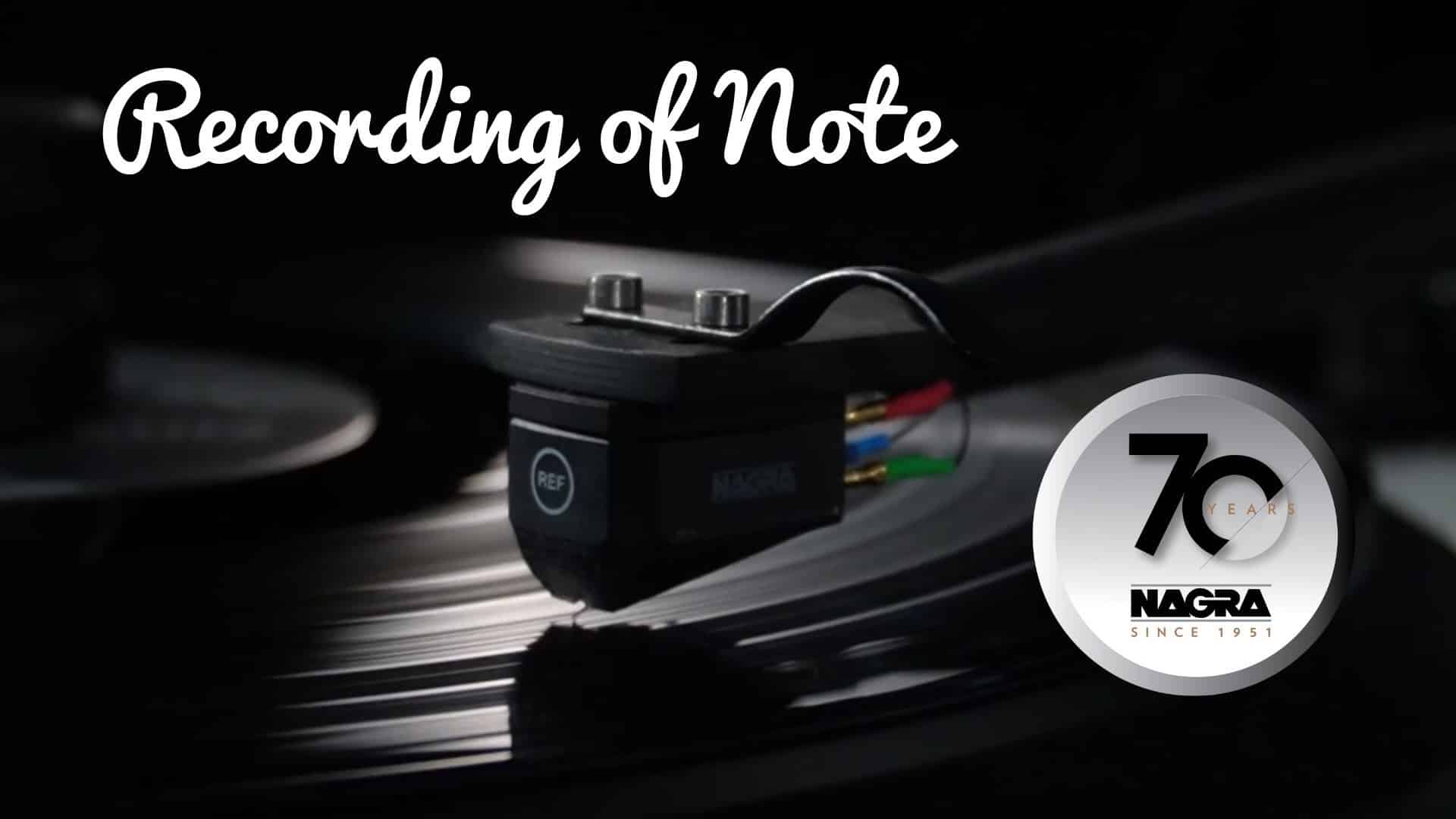Recording of Note
Symphonie fantastique, from Hector Berlioz
Review by Nagra
Many of us find classical music to be stuffy, pretentious and inaccessible. Yet, we know that the recorded classical music catalog contains many sonic gems. How to handle this dilemma?
For those who are curious about classical music but have not found the right introduction to the genre, we propose Hector Berlioz’s Symphonie Fantastique. While there are a number of other compositions which are similarly accessible, Symphonie Fantastique is an ideal classical work that will appeal to the uninitiated as well as the hard-core classical music lover.
Symphonie Fantastique is a sonic spectacular from a musical standpoint. Composed in 1830 and refined by Berlioz over the next fifteen years, it is an indisputable example of Middle Romantic era classical music. It oozes emotion. It is the musical story of the life of an artist suffering from unrequited love. The theme is generated from Berlioz’s own life circumstances when, as a 12-year-old boy, he fell in love with the 18-year-old niece of a family friend. Berlioz’s infatuation was laughed off by the young woman. He was crushed. His despair at this early age generated a hauntingly beautiful song, the melody of which appears many years later in the first movement of Symphonie Fantastique.
The experience of unrequited love recurs years later, when at age 23, Berlioz experienced another infatuation – this time with Harriet Smithson, a Shakespearean actress he saw perform in Paris. He became completely obsessed with her and sought her attention for several years. Despite his efforts, Smithson refused to ever meet him. He was once again crushed.
Berlioz’s pursuit of love continued to cause grief. At age 27 he met and fell in love with a 19-year-old pianist named Camille Moke. The two seemed to find love and agreed to marry. It wasn’t long, however, before Camille met an older, rich man and renounced her engagement to Berlioz in order to marry the older suitor. Spurned in love again, he resolved to kill Camille, the older man and her mother. His serious intentions were evidenced by the purchase of pistols, poison and a disguise. It was only after days of reflection that he abandoned his murderous plan.
Although, Berlioz ultimately married twice (remarkably, the first time to the actress Smithson after her career began to fade and her debts began to amount – coinciding with Berlioz’s rise in celebrity as a composer accompanied by a growing bank account!), it is the earlier failures at reciprocated love which inform the emotions and thematic elements in this symphony.
A part of what makes Symphonie Fantastique a perfect introduction to classical music is the fact that it is a Middle Romantic era work. This means that particular attention was paid to melody. Additionally, unlike the preceding “Classical” era 30-60 member orchestras, large scale orchestras were commonplace in the Romantic era. Berlioz wanted an orchestra of 220 pieces for the work’s premier. He ended up with 130 – still a sizable number compared to today’s 80-100 player orchestras. Berlioz was a master at orchestration and used his talent to colorful effect in his works.
Along with the Romantic eras large scale orchestras came a dramatic increase in dynamic range in musical compositions. In the case of Symphonie Fantastique you will hear four timpani drums being vigorously struck in unison by four players, massed violin and viola strings being played col legno (beating the strings with the wooden portion of the bow) and large church sized bells being struck on stage. Orchestral whispers to blasts. Combine this with colorful, relatable expressions of emotion and drama – feelings – and much of the stuffiness, fussiness and restraint of preceding eras is absent.
The 5 movements
The symphony is a work of five movements rather than four, as was the convention of the time. Berlioz titled the work Symphonie Fantastique: Episode de la vie d’un artiste … en cinq parties (Fantastical Symphony: Episode In the Life of an Artist … in Five Sections).
Berlioz wrote program notes for each of the five movements. He titled the first movement Reveries – Passions (Daydreams – Passions). His notes introduce a young musician who envisions a woman who embodies all that he desires and has dreamed of. The young artist’s imaginations are accompanied by what Berlioz calls an idée fixe or “musical idea”. A portion of this musical idea appears in each of the five movements of the symphony. In the first movement, the theme transitions through what Berlioz describes as reverie, fits of unmotivated joy, delirious passion, fury and tenderness. How nice of the composer to provide this guide from which a new listener’s imagination can expand.
The second movement bears the title Un bal (A ball). Here Berlioz’s young artist finds himself, regardless of where he is at the moment, envisioning the image of his desire. Here he imagines a ball. His imaginations are accompanied by the sounds of an elegant waltz, made all the more so by Berlioz’s use of two harps in the score. He fantasizes that he is swirling in dance with his beloved.
Movement three, Scene aux champs (Scene in the Field), the artist is in the countryside in the evening. In early youth, Berlioz’s family home was located in a pastoral setting in view of the French Alps. In this movement an English horn and an oboe (off stage) play as a duet in call and answer form representing two herdsmen in the distance. Berlioz writes that his young musician experiences hope, loneliness and ultimately fear of being deceived by his imagined love. The movement concludes with the plaintive calls of one of the herdsmen going unanswered by the other. As the lone English horn calls, four timpani strike rolls from the back of the stage evoking distant thunder which ultimately fades to silence in understated drama.
The drama is not so subtle in movement four, Marche au supplice (March to the Scaffold). Berlioz tells us that in this movement his artist is despondent, certain that his love has been rejected. Forlorn he tries to take his life with a dose of opium. Death does not come but instead he has a terrifying dream that he has killed his beloved. Berlioz writes that in his dream the artist is condemned to death and marched to a scaffold where he watches his own execution. As the title indicates, the movement begins with march-like drums. As the movement develops it varies in tone from solemn to chaotic to sarcastically playful. It is at the same time very dynamic with the appearance of athletic timpani strikes, splashes of cymbals and blasting horns. The conclusion of the movement includes a brief reprise of the first movement’s idée fixe played by a lonely solo clarinet which is violently interrupted by a crash of a cymbal, drums and horns representing the death blow. If your system is up to it, it is a real jump in you seat moment. The march motif returns to end the movement.
Berlioz titles the symphony’s fifth and final movement Song d’une nuit du sabbat (Dream of a Night of the Sabbath). The artist envisions his grotesque funeral as a gathering of monstrous creatures, eerie spirits, diabolical souls and frantic witches engaged in a satanic dance. The music begins with violins and double basses in an ominous tone. It’s not long before the tempo picks up and the wind section begins musically jeering the artist. Double basses ultimately return and are their play is punctuated by the mournful tolling of two large church bells. Once again, if your system is up to it, the first bell strikes will raise you out of your listening chair upon first hearing.
It is under these bell strikes that Berlioz introduces the traditional 13th century Dies Irae. Unlike Mozart, Haydn, Brahms and Liszt among others who have incorporated the Dies Irae with more reverence, Berlioz distorts it mockingly with spine chilling effect. This musical distortion was both praised and criticized by listeners of the time. Interestingly, it was used to great effect 150 years later in the opening scene of the great Stanley Kubrick’s film adaptation of Stephen King’s novel The Shining.
It perfectly set the tone for this unsettling psychological horror story. It is fair to say that it evokes the same ominously macabre effect on modern audiences that Berlioz’s audiences experienced listening to the final movement of his symphonic masterpiece.
There is no happy ending to the Symphonie Fantastique. Its last movement wildly swirls to conclusion with the orchestra playing all out. The artist’s dream ends in macabre fashion as his pursuit of unrealized love is distorted in this ghastly dream in which he is subjected to the ultimate eternal judgement.
The recordings of note
The recorded catalog of Berlioz’s Symphonie Fantastique is replete with many outstanding performances and sonically excellent versions. Two such standouts are, first, the Bernie Grundman cut, Classic Records reissue of the original 1960’s Everest label 35mm magnetic film recording of the London Symphony Orchestra’s performance under the baton of Sir Eugene Goossens. (Available through Acoustic Sounds.)
The other is a very contemporary live recording of the Gustavo Dudamel conducted Los Angeles Philharmonic. Available only as a Hi Res download released by the Deusche Grammophon label or on Qobuz, if you like to stream. The super energetic Dudamel may be the perfect conductor for this piece. Both the recording and performance are among the best available.
So, for those who have been curious about classical music but have not found the right recording of the right music to serve as an entrée into this genre of music, consider Berlioz’s Symphonie Fantastique. It just might be the perfect pathway to a world of discovery. For those who already enjoy the classical genre, consider the two versions of Symphonie Fantastique mentioned above. In addition to the musical joy that they bring, they are a great tool to explore the capabilities of your system.
The Los Angeles Philarmonic version, conducted by Mr. Gustavo Dudamel
Thanks to our partner Qobuz, discover one version of this piece on streaming, in high resolution here.
Thanks to them, you can get a free 3 months trial here.
Qobuz, a unique approach to online music
Qobuz is a high-resolution music streaming and download service. Pioneer of high quality sound since 2007, the French platform offers a unique and exclusive music experience. Qobuz gives music lovers and audiophiles access to an unparalleled wealth of content: a rich and eclectic catalog of more than 80 million tracks available in the best sound quality (Hi-Res and CD) and original editorial content written by a team of experts, passionate about music.
Qobuz is also the only company in the world to offer streaming and download music in high resolution.
Nagra의 최신 뉴스와 독점 컨텐츠를 이메일로 바로 받아보세요.


